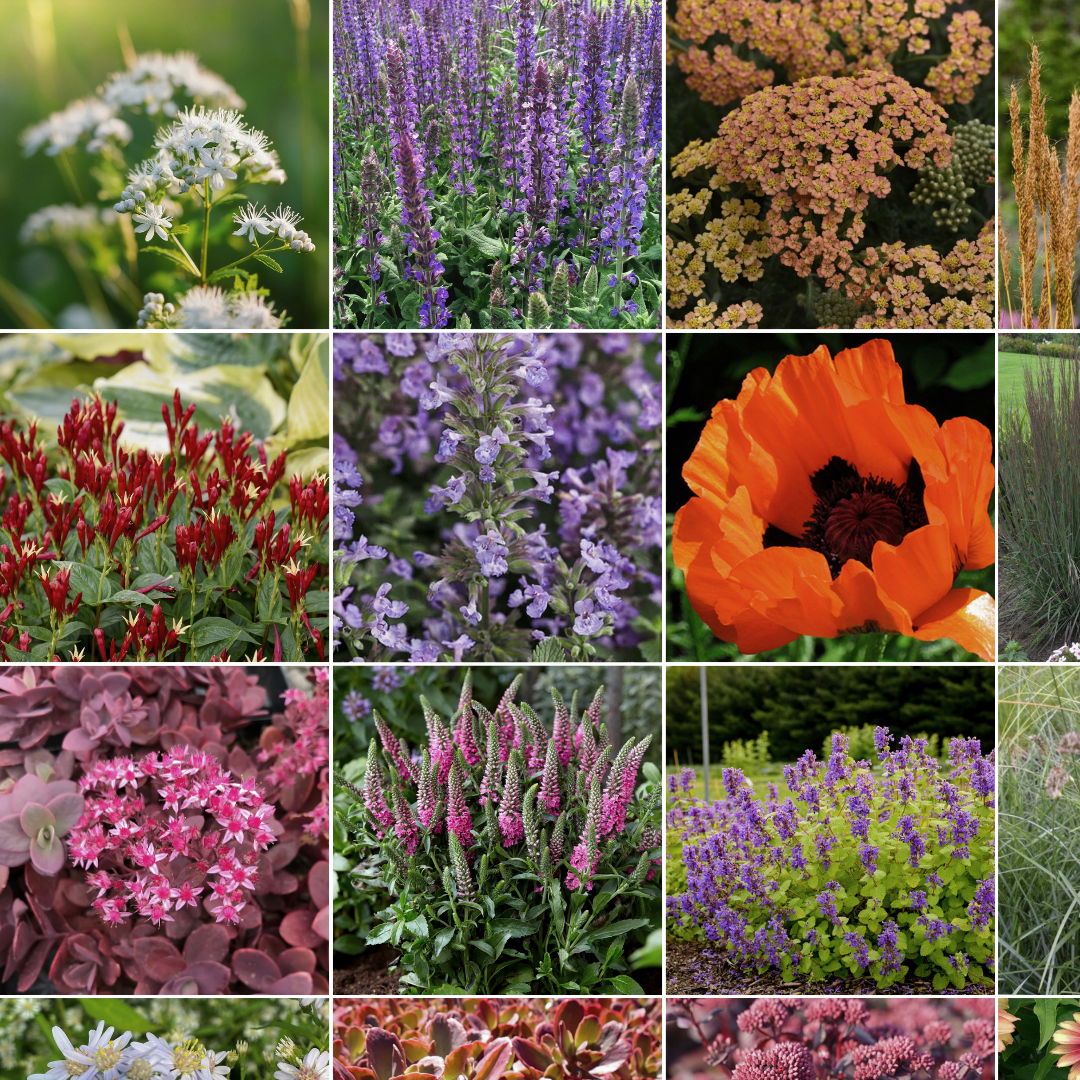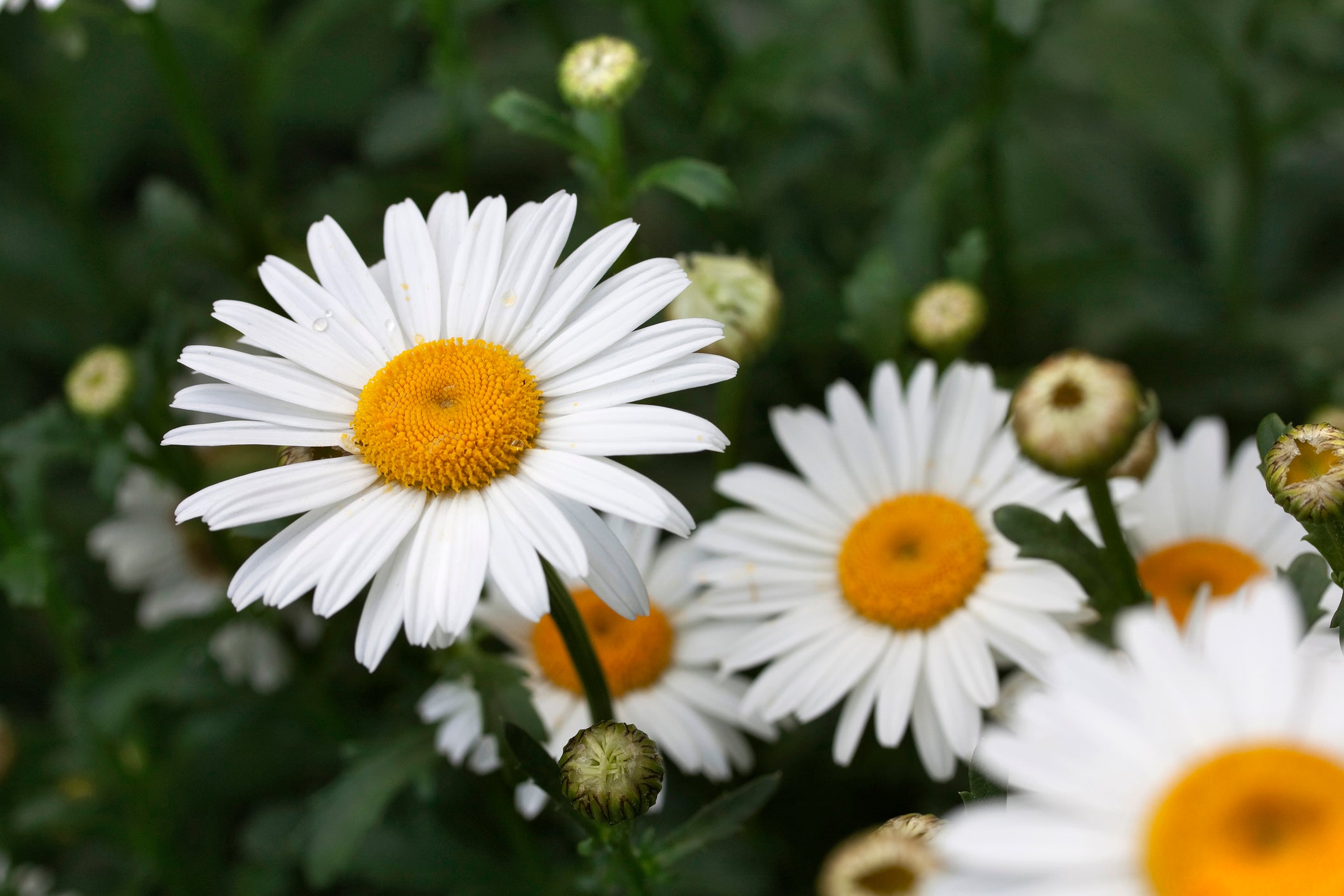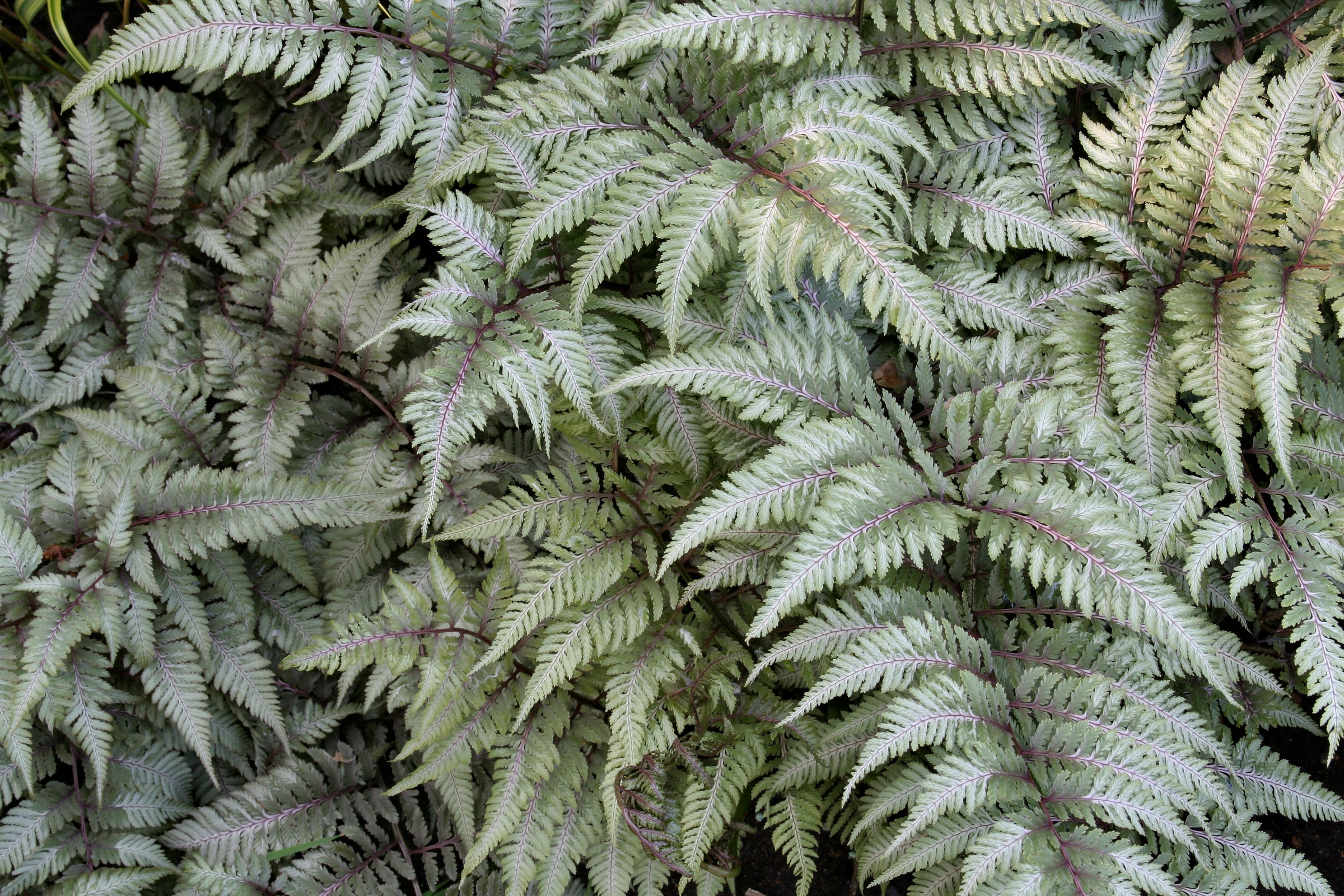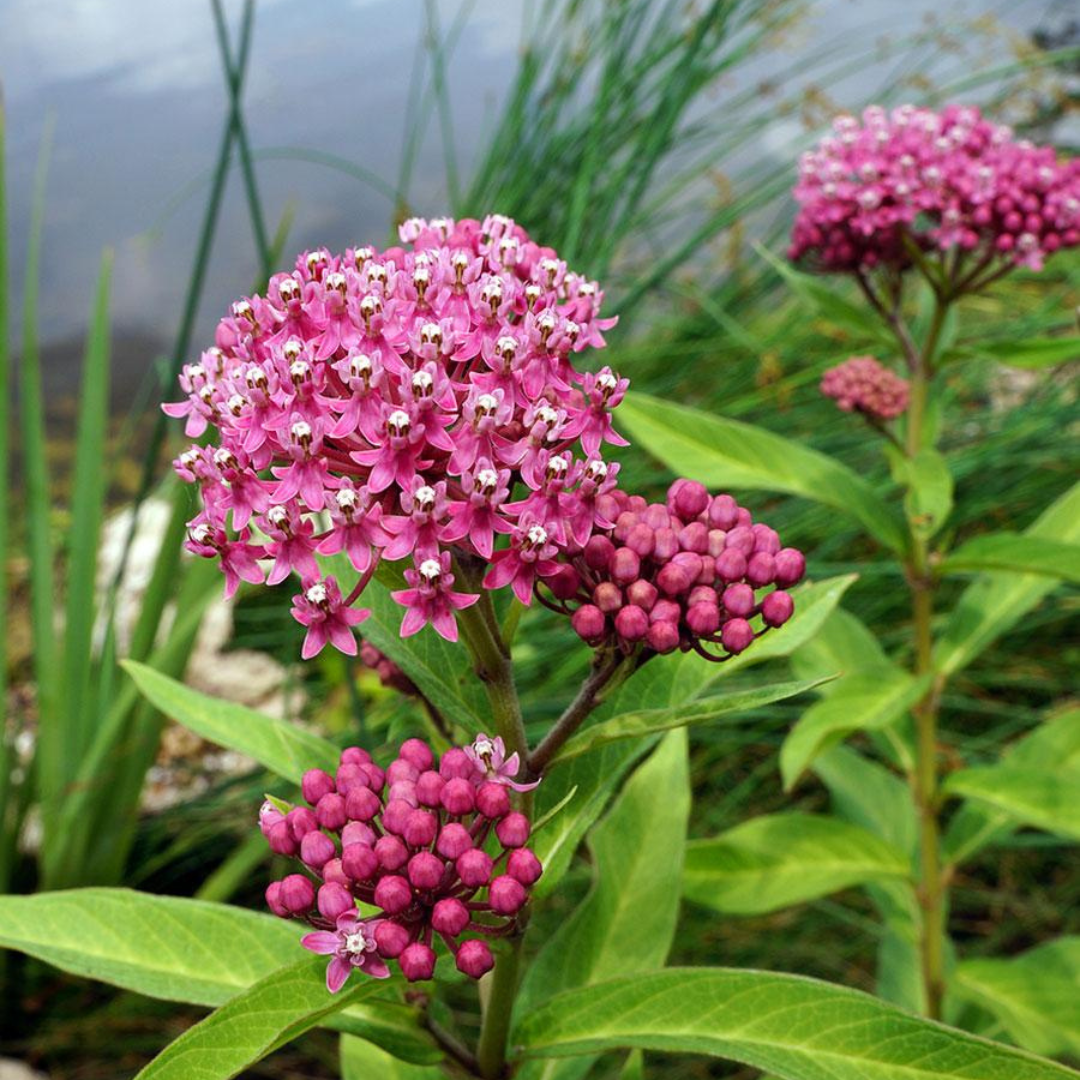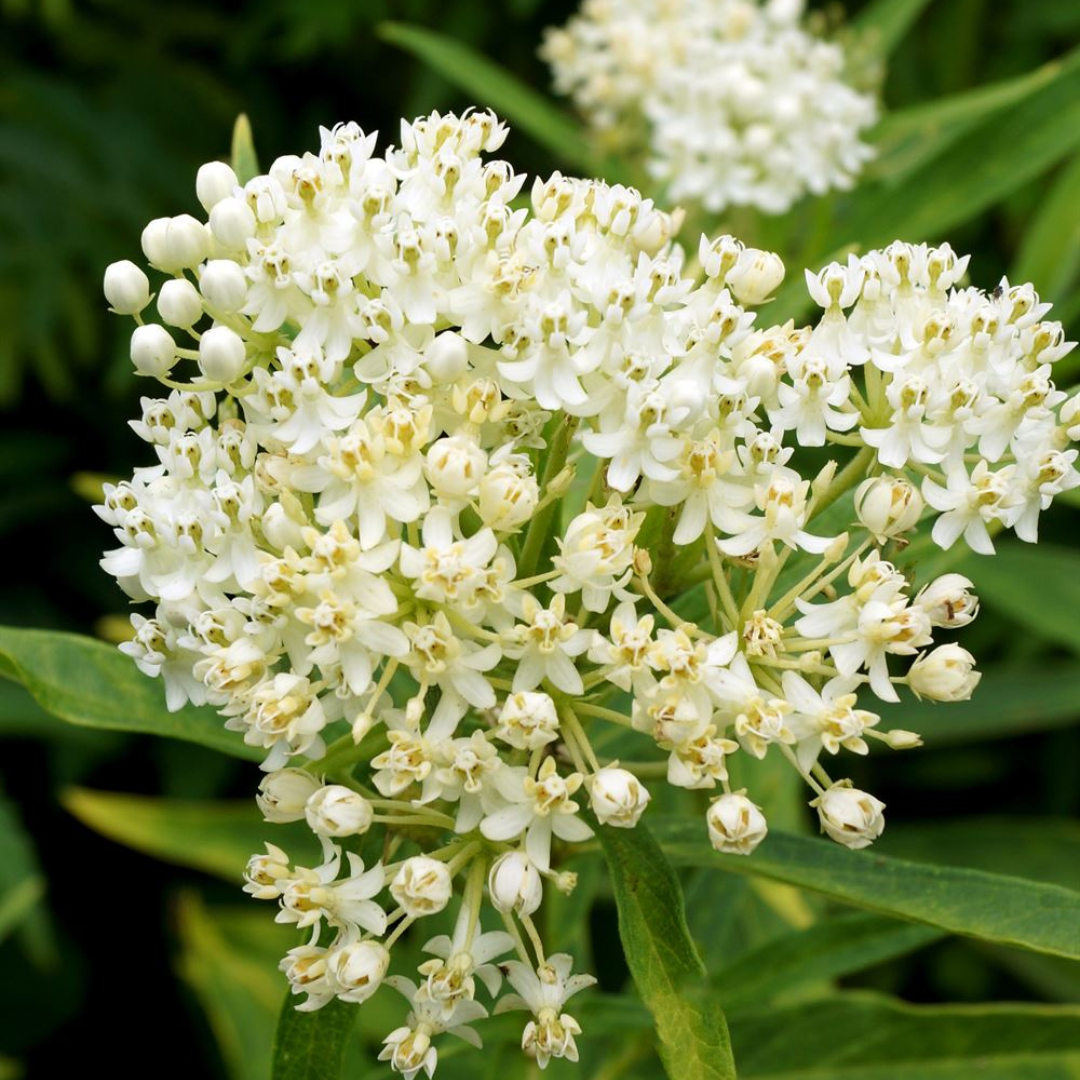
Asclepias 'Ice Ballet'
Add to Wishlist Full Sun
Full Sun
 Deer Resistant
Deer Resistant
 Pollinator Friendly
Pollinator Friendly
- In stock, ready to ship
- Backordered, shipping soon
Asclepias incarnata 'Ice Ballet': Snowy Blooms in the Summer Wetland
Cool and refined, Asclepias 'Ice Ballet' brings crisp white elegance to moist garden spaces with its fragrant, flat-topped blooms that appear in midsummer. This selection of swamp milkweed stands tall and upright, with narrow green foliage that serves as both a striking backdrop and a vital host for monarch caterpillars. Its blooms are sweetly scented and highly attractive to bees, butterflies, and other beneficial insects—making it as ecologically valuable as it is beautiful.
Plant Characteristics:
- Height: 90–120 cm
- Spread: 45–60 cm, upright and clump-forming
- Flower Colour: Pure white
- Flowering Period: Midsummer to early fall
- Foliage: Narrow, lance-shaped leaves; medium green, upright
- Sunlight Requirements: Full sun
- Soil Requirements: Moist to wet, well-drained soil; tolerates clay
Uses and Benefits: Asclepias 'Ice Ballet' is a striking vertical accent in rain gardens, moist borders, and pollinator plantings. Its clean white blooms cool down hot summer palettes and bring structural contrast to meadow-style combinations. As a host plant for monarchs and a reliable nectar source, it supports native biodiversity while offering a refined presence in ornamental gardens.
Companion Plants: Pair with the tall, dusky blooms of Eupatorium atropurpureum, the soft blue-green blades of Carex 'Blue Zinger', and the deep blue spires of Lobelia siphilitica for a moisture-loving mix that buzzes with pollinators and radiates quiet colour harmony.
Care Instructions: Plant in full sun with consistently moist soil. Tolerates heavy soils and wet conditions once established. Water during dry periods to maintain vigour. Cut back stems in late fall or leave standing for winter structure and wildlife value. Mark the plant’s location, as it is slow to emerge in spring. Avoid disturbing roots.
History: A cultivated form of native Asclepias incarnata, 'Ice Ballet' was selected for its pure white blooms and strong upright habit. It shares the same habitat preferences and monarch-friendly qualities as its rose-pink relatives, with a more formal appearance suited to designed landscapes.
Final Thoughts: Cool, clean, and pollinator-approved, Asclepias 'Ice Ballet' is a graceful anchor for wetland edges and rain gardens—proof that elegance and ecology can bloom hand in hand.


